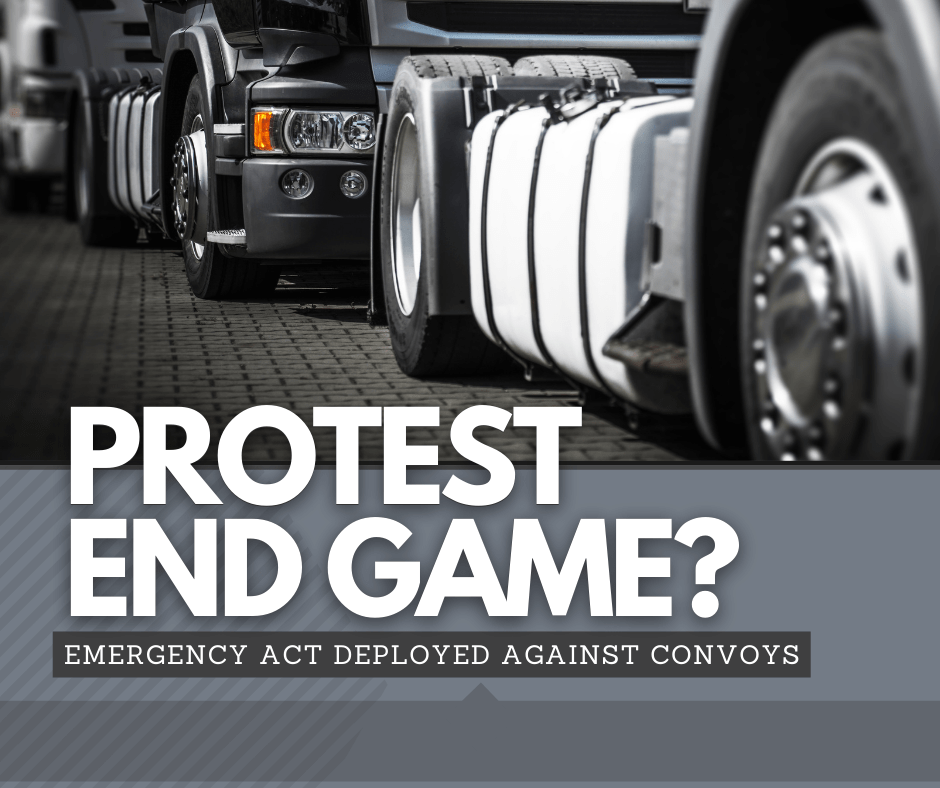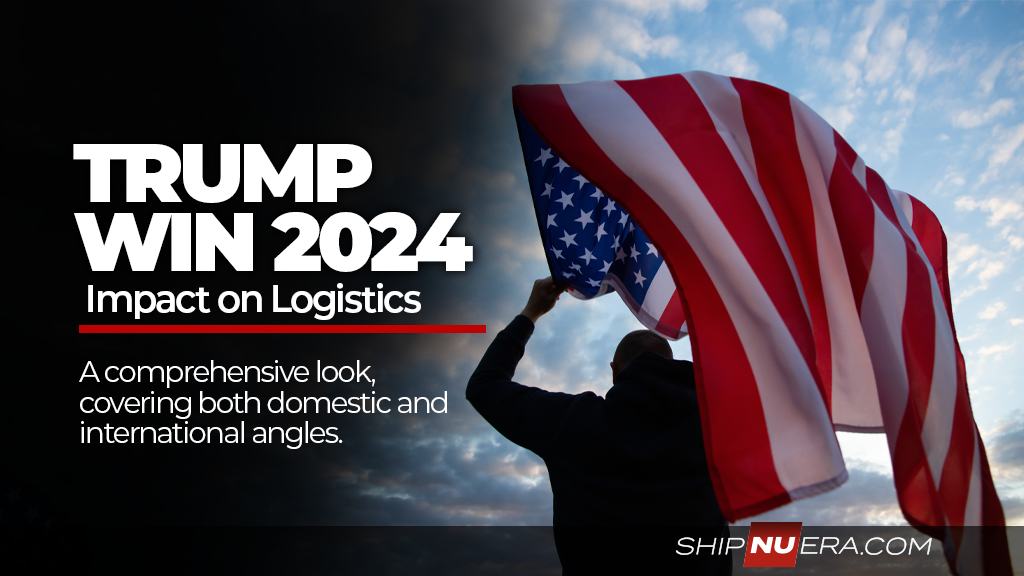Ontario’s Emergency Act vs Trucker Convoy
Does this signal the Endgame for the Trucker Protests
Okay okay, we know that this is the fourth week in a row that we’re focusing on the Trucker convoy protests, but we need to cover it one more time as it looks like this may be the last time we’ll have much to say about them. As the federal government deploys one of the most aggressive tools it has to deal with civil unrest, it seems that by this time next week the streets of Ottawa may be completely clear of the convoy.
Last weeks post covered the spread of these protests – more here.

The Emergencies Act
On Monday Prime minister Trudeau held a press conference to announce that his government would be invoking the Emergencies Act in order to deal with the current protests and civil unrest in Ottawa and in other communities across Canada. The Act has been described as the most powerful federal law as it gives the federal government extensive powers to deal with problems that arise during crisis’ that may not be appropriate during normal times. The act can only be invoked during very specific situations and to address very specific types of crisis’, in this case, it’s being invoked to deal with a “Public order”, or civil unrest, crisis.
Under this situation the Act allows the federal government to make it illegal to gather in certain areas and can forbid the use of certain property. More broadly the act allows the federal government to force people or groups to render certain services and allows the government to regulate the distribution of essential goods. Trudeau was careful to say that the Act was not invoked lightly and that its use will be ” specific, limited, responsible and reasonable,”
The main tools that the government said that it will be deploying will be fines and restrictions on gathering in Ottawas downtown core, forcing tow truck companies to help remove the backlog of trucks and cars, and most relevant to truckers, the federal government will be freezing business accounts and revoking insurance for trucking companies that are participating in the protest.
Details of Ontario’s Emergency Act, available here.
The History
The emergencies act in its current form has never been invoked by any previous government. However, the law it was made to replace, the War Measures Act, was last used by the previous Prime Minister Trudeau during the 1970 October Crisis in Quebec. The War Measures act, believe it or not, was more powerful than the Emergencies act of today, and it was also wielded more liberally by Trudeau Sr during the violent separatist movement than it seems this Trudeau plans to wield his powers during this crisis. Though our current situation may not be as extreme as bombings and political kidnappings, many pundits are drawing parallels between our current crisis and the civil unrests of the past
What comes next
With the blockades at the Coutts and Windsor border already clearing due to police action and some protesters leaving on their own, it seems that most of the new powers that the government has invoked will be used to clear out the nation’s capital. There are currently less than 400 vehicles clogging the downtown core of Ottawa, down from 4000 when it first started. Though blocking funding and freezing accounts will no doubt weaken the protests, what you’ll likely be reading about over the next few days will be the direct actions taken by local police and RCMP.
We’re likely to see more aggressive clearing out of protesters as RCMP, who usually stay away from provincial and municipal issues in Ontario, move in to support the local police. After the Ottawa Police Chief stepped down earlier this week, the new interim chief took over stating that the department and the government were still weighing their legal options for deploying the Emergencies Act powers.
With Ottawa authorities and local residents hoping to avoid another weekend like the last two, it’s likely that things will begin to move quickly over the next three days as the federal government begins to action their new powers. Though the government hoped that merely announcing the measures would cause some clearing out, it seems that the remaining protesters are dug-in and won’t budge until all mandates are lifted. With that unlikely to occur anytime soon, it seems that the protesters and government are at a stalemate, one that likely will be broken by force. Now the only questions now are how difficult will removing the protesters be, and what will the fallout be from taking such actions.

